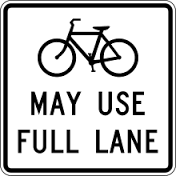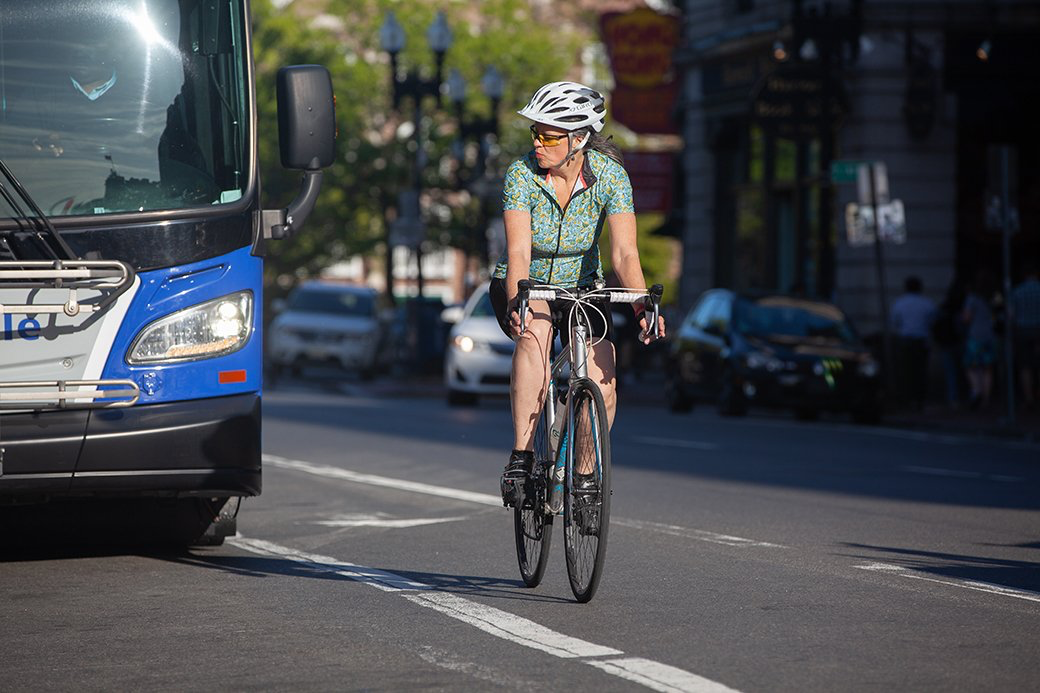
Take the Lane
When there is no bike lane, it is common to see yellow caution signs saying “Share the Road” with cyclists. This means that it is expected that the cyclist will occupy the driving lane, which may slow traffic. Under the vehicle code “slower traffic is required to keep right,” the cyclist is required to move to the right when it is safe for the cyclist, which allows traffic to pass.
If there are many cars behind a cyclist, the cyclist should pull off the right side of the road and get off the bike in order to allow traffic to pass. This is also recommended if drivers are honking or otherwise displaying their anger at having to drive slowly, for the safety of the cyclist. Though you have the right of way, in a conflict with two tons of steel, a cyclist can only lose.
Click here to see a video about taking a lane.
Right of Way
Right of way is important to know for everyone, so that conflicts–which become accidents–don’t occur.
Pedestrians have the right-of-way when crossing a street at an intersection (over bikes), but must yield if an approaching vehicle poses an immediate hazard.
When entering an intersection the first vehicle or bike to arrive has the right-of-way. If both enter the intersection at the same time, the vehicle on the right has the right-of-way, hence the term “right-of-way.” You can review the specific vehicle code here. Just like with taking the lane, if a driver appears to be unlikely to let you take the right of way, just wait. Cyclists will always lose in a collision with a car.
Regardless of right-of-way, bicyclists and walkers should establish eye contact whenever possible with drivers. This is will make sure they see and acknowledge you.
Remember, safe is better than right. It’s important to know the rules, but never insist on the right-of-way. Use common sense in yielding to cars, bicyclists and pedestrians when necessary.

We’re not blocking traffic, we ARE traffic!
